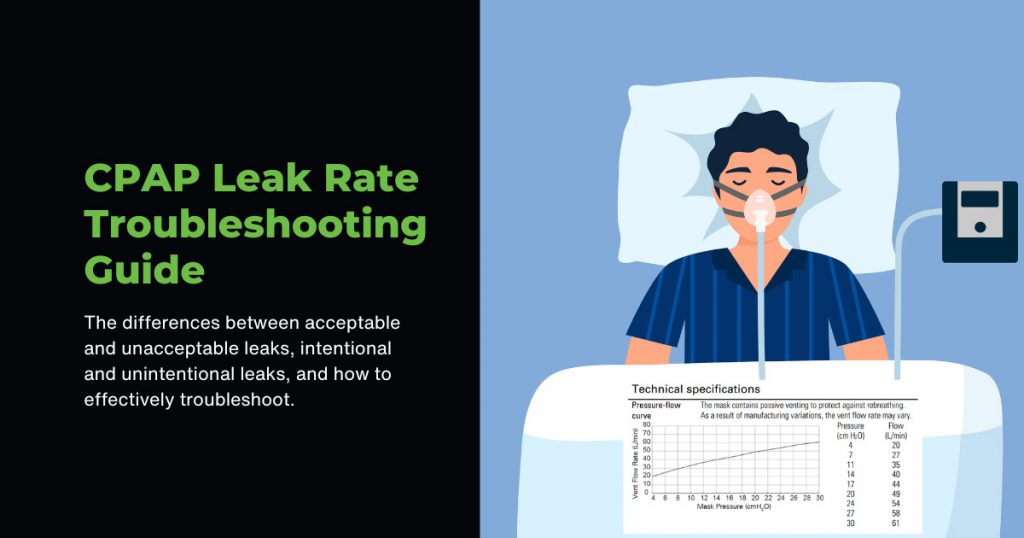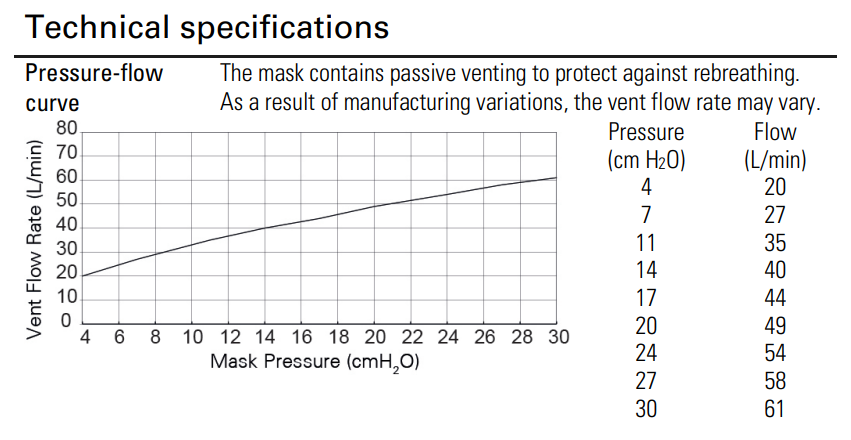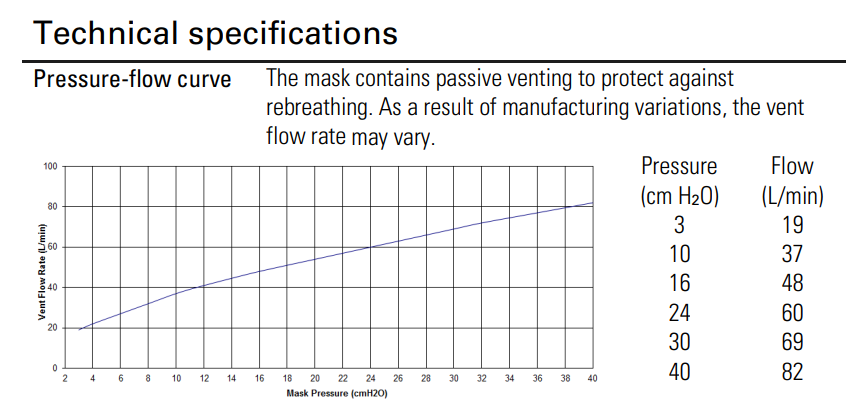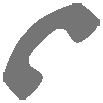
If you are undergoing CPAP therapy to treat your sleep apnea, you’ve probably experienced air leaks from time to time. While some leaks are a sign of big trouble, you may be surprised to learn that not all air leaks are bad. In fact, some of them happen by design!
For this reason, CPAP manufacturers use guidelines to help you know whether or not your air leaks are a sign of concern. In most cases, the maximum allowable leak rate is 24 Liters Per Minute (LPM). However, this will vary slightly depending on your pressure settings and the type of mask you wear.
We understand that CPAP leak rates can be difficult to navigate, even for a CPAP pro. That’s why we want to help you better understand the differences between an acceptable leak compared to an unacceptable leak, as well as intentional leaks versus unintentional leaks. We’ll wrap up by answering some common questions about your CPAP leak rate and provide resources along the way to combat the unpleasant side effects of a leaky CPAP mask.
What Is CPAP Leak Rate?
CPAP leak rate is the rate at which your CPAP machine is unintentionally leaking air out of the CPAP system. It is measured in Liters Per Minute (LPM). Most air leaks occur around the CPAP mask, but they can also come from the tubing, humidifier chamber, or air outlet of your machine. Knowing when your leak rate is too high can help you make positive changes that result in more restful and effective therapy.
Your CPAP machine readings will indicate your leak rate alongside other important metrics like your AHI and usage hours. Some machines will even give you a positive or negative rating for your leak rate following each use. According to a 2013 study published in the Indian Journal of Sleep Medicine, a leak rate of 24 LPM is generally acceptable.
When you are viewing this data, keep in mind that your machine is displaying the rate of unintentional leaks. Your mask is designed to allow a certain level of intentional leaks, but that is not factored into the data your machine reports to you. We’ll go into more detail about these intentional leaks later on, but generally speaking, they aren’t a factor in your official leak rate.
What Does It Mean if You Have a High Leak Rate?
A high leak rate means your CPAP machine and/or equipment is experiencing too many air leaks throughout the night, usually through your CPAP mask. In most cases, a leak rate above 24 LPM is considered too high and should be investigated because it can impact the effectiveness of your therapy.
What Causes a High Leak Rate?
There are a few potential causes for unintentional leaks in your CPAP circuit, including:
- Your CPAP Mask is Not Sealing Correctly Because:
- Your mask fit is too loose or too tight.
- You have an old cushion or headgear that needs to be replaced.
- Your cushion is dirty and needs to be cleaned of facial oils, dead skin cells, or other debris.
- Your cushion or mask frame is the wrong size for you.
- You Are Using the Wrong Type of Mask Because:
- Your mask doesn’t cater to your breathing style.
- Your mask is not designed for your sleeping style or preferred sleeping position.
- Your pressure settings are too high for your mask design. This is common with nasal pillow masks.
- Your mask doesn’t meet your unique needs, such as face shape, facial hair, nasal anatomy, etc.
- You Are Losing Air Through Your Mouth While You Sleep Because:
- You should be using a full face CPAP mask.
- You have sinus congestion or an infection.
- You need a chinstrap to keep your mouth closed.
- Your Hose/Tubing Is Causing Leaks Because:
- There is a tear at one of the connection cuffs.
- Your air outlet or humidifier chamber outlet gasket is old, torn, or damaged.
- Your tubing has a puncture.
Normal CPAP Leak Rate Range
It’s completely normal for your CPAP mask to leak, at least a little bit. As long as your leak rate is under 24 LPM and isn’t affecting your therapy, you probably don’t need to worry about it. It’s even fine if your leak rate occasionally or briefly surpasses 24 LPM; the issue is with a consistent leak of 24 LPM or greater.
There will always be minor variations in your therapy that cause mask leaks, so it’s also important to set expectations accordingly.
However, you should certainly take action to stop your mask leaks if:
- You’re experiencing dry eyes
- The noise of the leaks is disrupting your sleep (or your partner’s)
- You still feel exhausted when waking up due to ineffective therapy
- You’re waking up with a dry mouth
How Does a High CPAP Leak Rate Affect My Therapy?
Simply put, your therapy isn’t going to work for you if the pressure from your CPAP is sneaking out the sides of your mask. When your therapy pressure isn’t making its way to your airway, it becomes more prone to collapsing on itself, resulting in more apneas and hypopneas.
Essentially, with a leak rate over 24 LPM, you might as well not be wearing your mask! You miss out on the benefits of CPAP, such as increased energy levels and better cognitive performance and mood regulation. If you’re regularly sleeping with an excessive leak, you also become much more prone to the dangers of untreated sleep apnea and are likely to experience dry mouth or dry eyes due to the leak.
Troubleshooting a High CPAP Leak Rate
Sometimes, the source of your leak is obvious. Other times, you may have to rely on context clues to understand what’s happening and where the air is going while you’re unconscious. Here are a few action steps you can take to keep your leak rate low and your therapy benefits in abundance:
- Re-Seat Your Mask: The first step in troubleshooting a leak is always going to be re-seating your CPAP mask. To do so, simply grab your mask by the frame and pull it off of your face, then gently re-seat it, allowing the pressure from your machine to create a strong seal.
- Re-Fit Your Mask and Headgear: If re-seating your mask didn’t help, you may need to adjust your headgear. Do so while lying in your preferred sleeping position with your machine running and mask on. If the leak is coming from the top of your mask and it has four-point headgear, adjust the top straps. If the leak is coming from below your mask, adjust the lower straps.
- Clean Your Mask Cushion: A CPAP mask has the best chance to make a secure seal when both the mask cushion and your face are clean and cleared of facial oils, sweat, saliva, and other debris. Wash your mask with soap and water or clean it with a mask wipe and wash your face as well, then try again.
- Replace Worn Components: An aged cushion or headgear can contribute to a leaky CPAP mask, too. If cleaning your mask didn’t help, it may be time to consider replacing your cushion or headgear.
- Try a Mask Liner: Nearly every style of CPAP mask has a soft cloth mask liner you can use to create a barrier between you and your mask cushion. Not only does a mask liner provide comfort and relief for sensitive skin and sensory conditions, but it can also prevent your mask from unintentional leakage.
- Consider a New Mask Style: If the source of your leaks is definitely your CPAP mask and none of these tips helped, you should consider a different mask or different mask style entirely, especially if you’re experiencing a leak at high pressures while wearing a more minimalistic mask style.
If the leak doesn’t seem to be coming from your mask, try the following:
- Inspect Your Tubing: You likely won’t be able to see a leak in your CPAP tube, but you should be able to hear or feel it. While your therapy is running, see if you can feel or hear air escaping from your tubing. If you can’t find a leak but feel confident that it’s coming from your tube, get a spray bottle with soapy water and spray your tube down while your therapy is running. You should see small bubbles start to form wherever your air is leaking from!
- Inspect Your Humidifier Chamber and Air Outlet: The last potential cause of air leaks in your CPAP circuit is going to be in the air outlet where your humidifier chamber expels air to your CPAP tube. Inspect the silicone gasket of the air outlet to ensure it is not cracked, warped, or otherwise damaged. Likewise, inspect your humidifier tub for cracks that may be leaking air as well.
Now that you have a better understanding of the potential causes, drawbacks, and solutions to a high CPAP leak rate, we’ll discuss the intentional leaks built into all CPAP masks. The following section is not required for your understanding, but it may help you better understand how your CPAP machine works.
What is an Intentional CPAP Leak?
An intentional leak is a leak that is present due to the way that your CPAP mask is designed. CPAP masks are required to have exhalation vents and anti-asphyxiation valves to prevent you from breathing carbon dioxide. These valves also protect you from suffocation if your CPAP machine ever turns off or the power goes out while you’re asleep.
What you need to know about intentional leaks is that if your CPAP mask is leaking air, but it’s coming out of the vents in your mask, you have nothing to worry about!
Every CPAP mask includes a chart in its product manual that shows the flow of air (in LPM) through these built-in vents as it relates to a range of CPAP pressures. Usually, this information is found toward the end of your product manual under “Specifications” or, more specifically, “Pressure Flow Curve”.
Here’s an example from the product manual of our best-selling nasal pillow mask, the AirFit P10:

As you can see here, the AirFit P10 is designed to intentionally leak a certain amount of air at any given pressure setting. This is true for every CPAP mask, and in general, full face masks are tested to much higher pressure settings, while nasal masks tend to fall somewhere in the middle.
To illustrate this difference, here is the flow rate chart from our best-selling nasal mask, the AirFit N20:

And here is the flow rate chart from our best-selling full face mask, the AirFit F20:

Looking at all three charts, you’ll notice that the nasal pillow mask was only tested to a pressure of 20 cmH2O, while the nasal mask was tested up to 30 cmH2O, and the full face mask up to 40 cmH2O; this is because full face masks and nasal masks typically withstand higher pressure settings than nasal pillow masks can.
Your CPAP machine understands when unintentional leaks are happening because intentional leaks are designed in a way that doesn’t affect your therapy pressure in any meaningful way. So when an unintentional leak occurs, your CPAP machine will notice the pressure change and measure the leak rate in LPM.
Frequently Asked Questions About CPAP Leak Rate
What Does 95% Leak Mean on CPAP?
If your sleep report contains a 95th percentile reading, it indicates the leak rate you were at or below for 95% of your therapy time. While your leak rate maximum will likely be a higher peak, your 95th percentile leak should not exceed 24 LPM. ResMed machines use a 95th percentile reading, while Philips Respironics machines use a 90th percentile reading.
What is a Bad Leak Number on CPAP?
If your leak rate is consistently higher than 24 liters per minute, you should begin troubleshooting for the source of your leaks. Leak rates above 24 LPM are typically a sign that your therapy is ineffective and something needs to be cleaned, replaced, or re-evaluated.
What Causes a High Leak Rate on My CPAP Machine?
Most commonly, a high leak rate is caused by an ill-fitting mask. This can be remedied by re-seating or re-adjusting your mask, cleaning it, replacing worn components, or considering a mask style that is a better match for your breathing style, sleeping style, and pressure setting. Alternatively, you may need to replace your tubing, air outlet, or humidifier chamber, or even consider a different mask style.
Final Thoughts
Understanding CPAP mask leak rates is important for your therapy success. It’s perfectly normal to experience leaks when treating sleep apnea with a CPAP machine. However, not all leaks are a cause for concern. In fact, some leaks are intentionally built into CPAP masks.
While some level of leakage is acceptable, a consistently high leak rate above 20-24 LPM can impact the effectiveness of your therapy. Common causes of high leak rates include an ill-fitting mask, mouth breathing during sleep, and aging or unclean equipment. You may also need to re-evaluate the mask you use, as it may not be designed to accommodate your pressure settings or preferred sleeping position. Fortunately, troubleshooting techniques such as adjusting your mask fit, using a chin strap for mouth leaks, and replacing worn components can help resolve high leak rates.
By understanding CPAP mask leak rates and addressing issues as they arise, you can enhance the effectiveness of your therapy, leading to better sleep and improved overall well-being. If you have any other questions about your leak rate or anything else you experience during your therapy journey, don’t hesitate to reach out to our expert customer service team.
Sleep well, and breathe easy!



